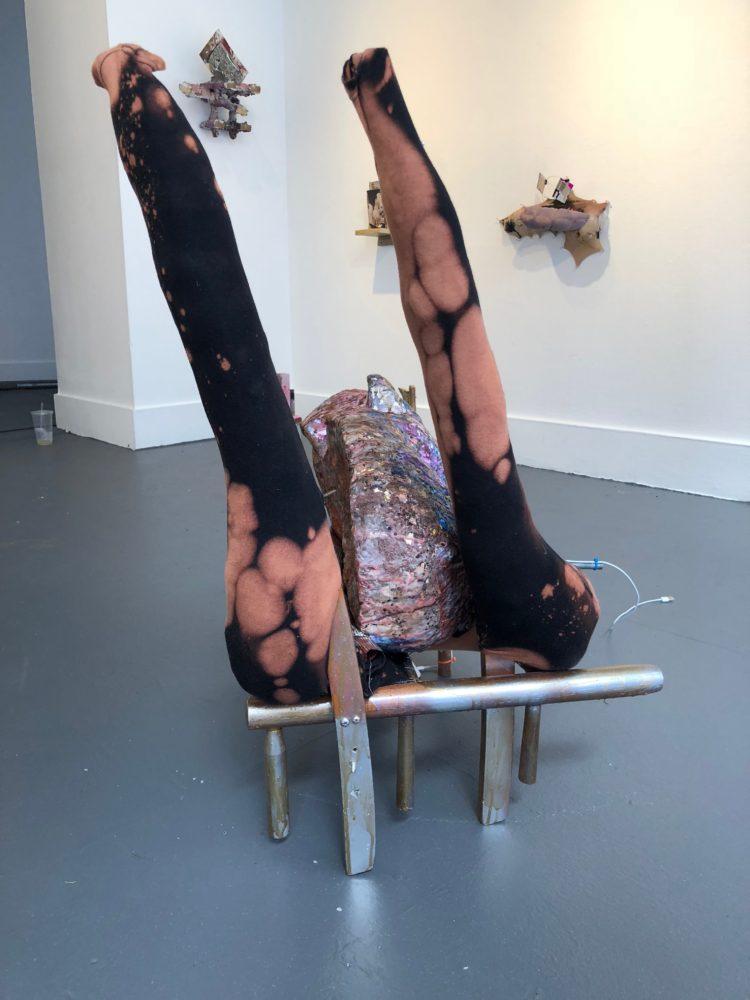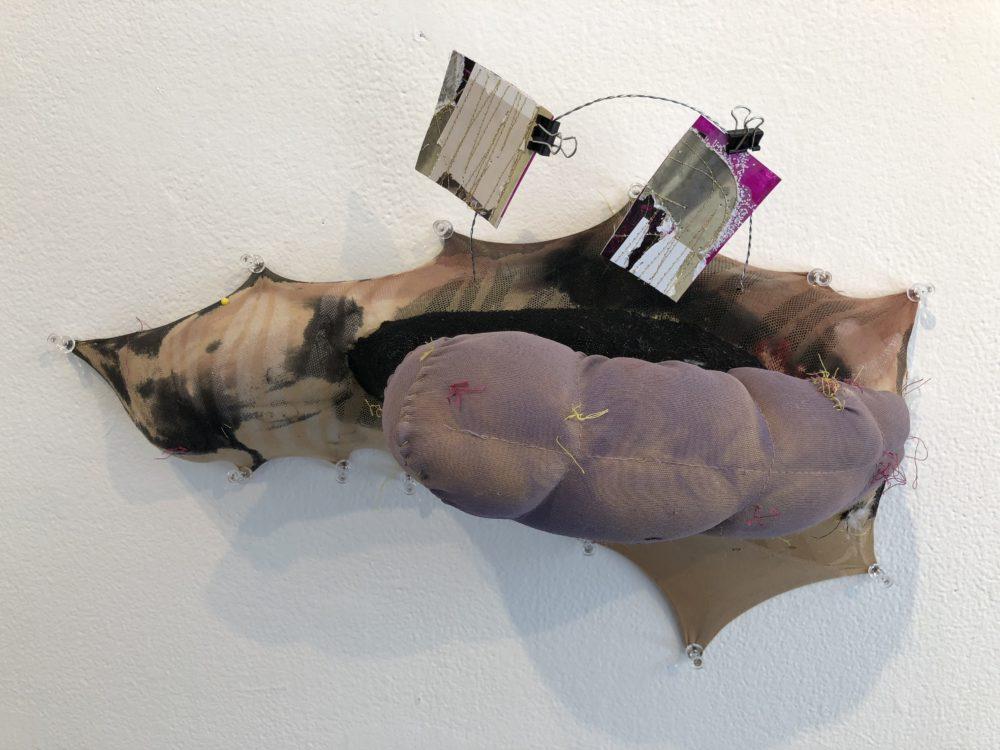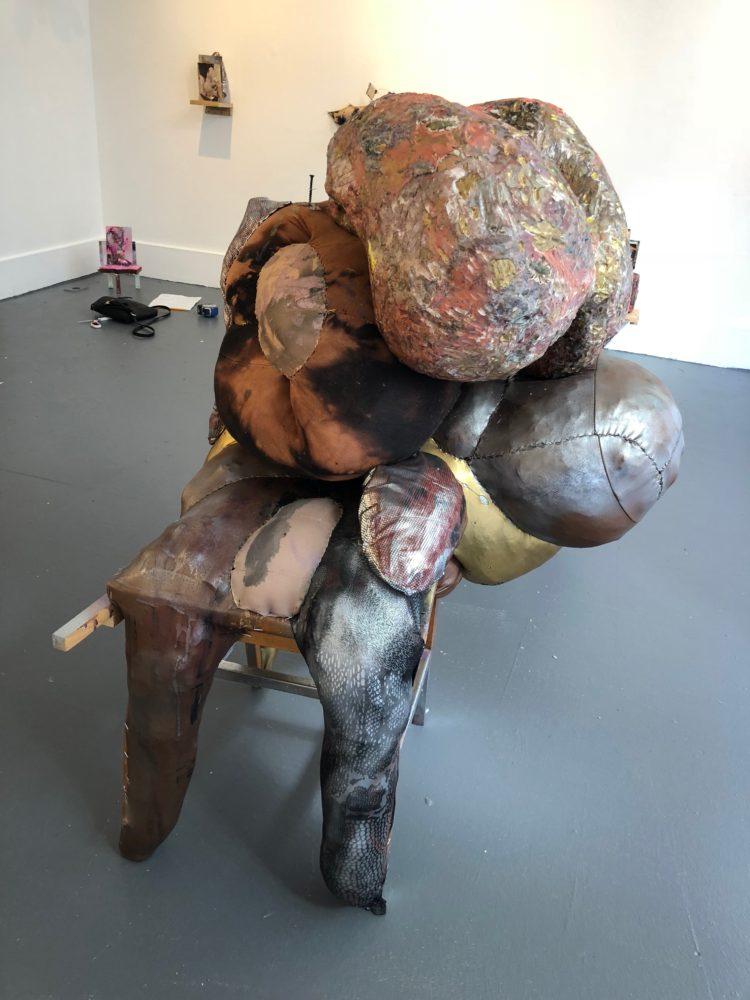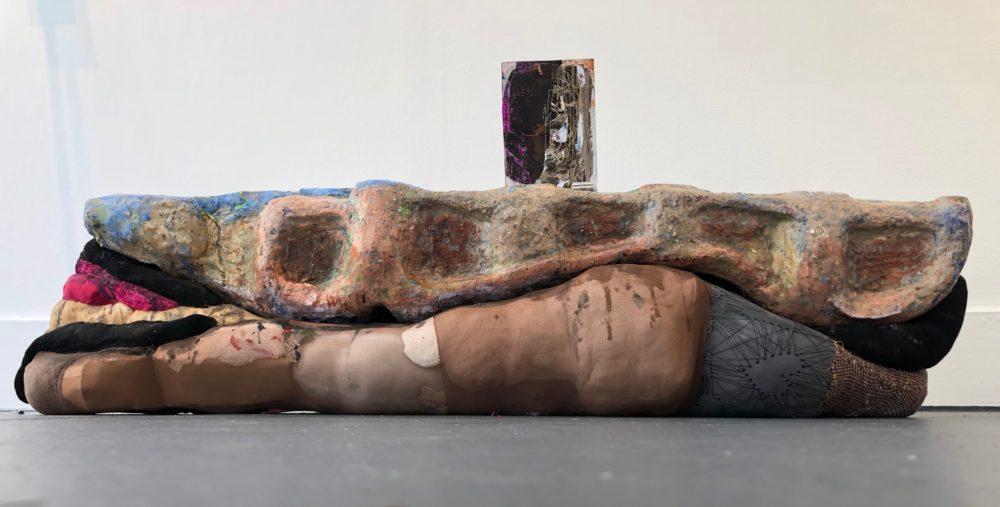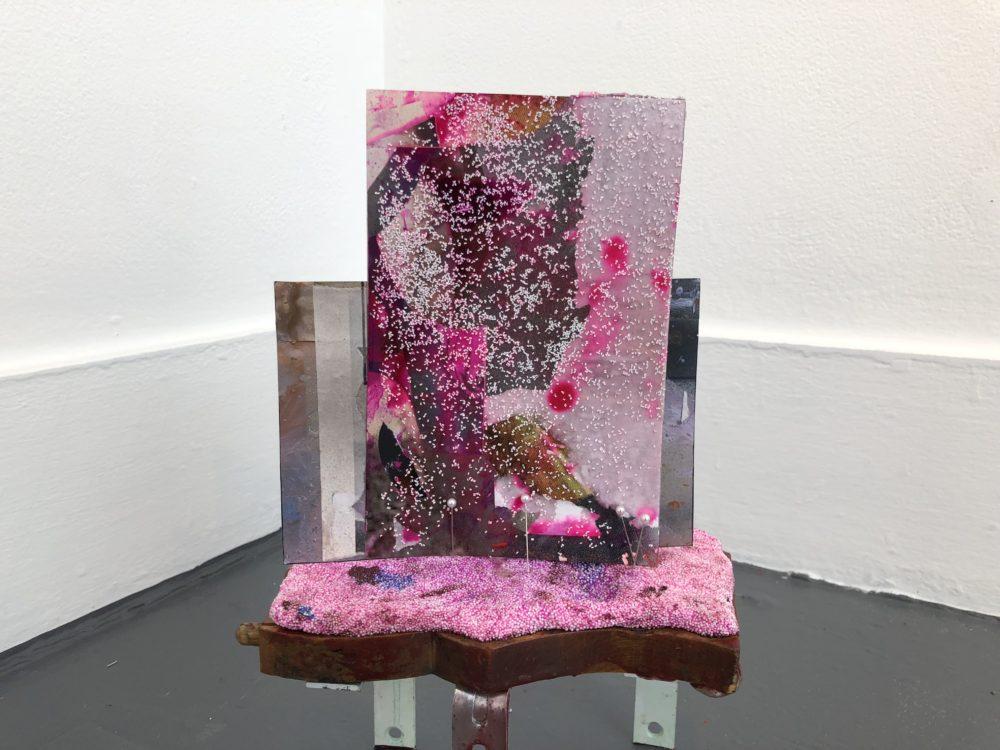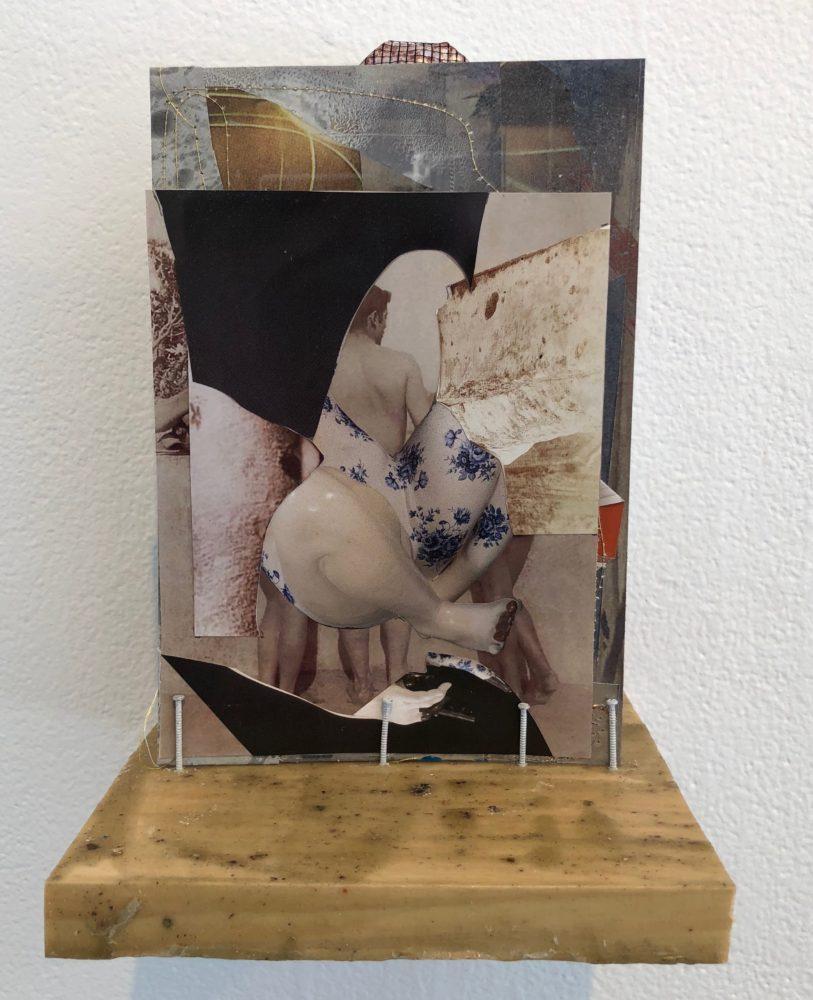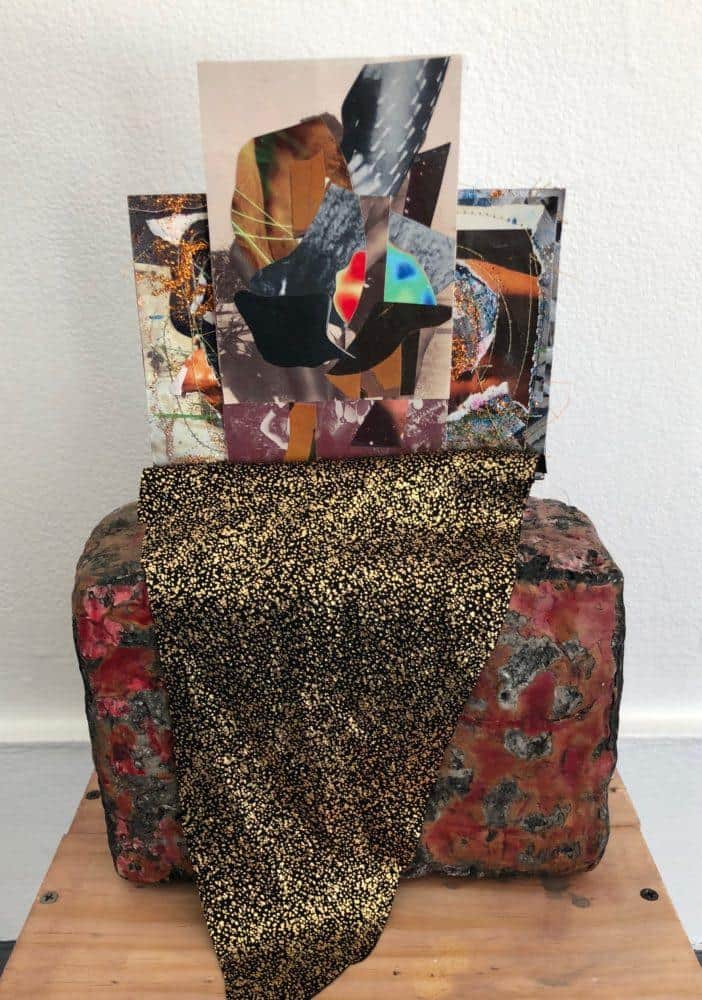
Anahita Vossoughi: Beige Thick Golden Glue
Featured Artist: Anahita Vossoughi
May 11—June 30, 2018
Anahita Vossoughi, Pin Chew Sprinkle, 2018. Wood, Clay, Photo Collage, Spray Paint, Ink, Glitter, 14x8x5 inches.
Artspace is pleased to present Beige Thick Golden Glue, a solo show of mixed media sculpture and collage by Anahita Vossoughi that proposes a new ambivalent language for an aesthetics of desire and fetish written by and for women. Created over the past two years, these works continue Vossoughi’s career-long investigation into the anxiety of the contemporary body and its anatomy, asking how and why bodies are fashioned, manipulated, maintained, imagined, and represented by the self and others. The conflict of wanting to be desired, as long it is on one’s own terms, creates a central tension in this show.
Vossoughi describes her sculptures as events for reclaiming the terms by which male artists have historically depicted the female and male nude. She is particularly fascinated by Hans Bellmer’s La Poupée (1934), a life-sized female fetish doll made of wood, flax fiber, plaster, glue, and scant clothing. Bellmer obsessively photographed versions of this doll in hundreds of over-sexed bifurcated arrangements, sometimes taking her to parties. From 1935-36, he created a second version of the doll composed of ball joints, four legs, four round stylized breasts, an upper torso, three pelvises, a pair of arms, and the recycled head and hand from the first doll.
Vossoughi responds to La Poupée by initiating a new conversation around the abstracted female form. Golden Staples Sit Squat, for example, is dressed in swaths of her personal clothing, hand sewn to pieces of gold, silver and animal print stretch fabrics. There is a sense that this sculpture might be someone, a certain hybrid woman of the future, who is both animal and robot. But Vossoughi’s sculptures are not explicitly human-like, her unfinished bodily forms are bound to domestic objects (a chair, table, ironing board, dolly) that they inherit as body parts. Through their fastening to these stable forms, they cannot be dismembered or rearticulated by a user. Also, the figures are tender, but somewhat repulsive, their orifices are composed of heavy plaster casts that cannot be sexed, and their skins unevenly stuffed. As a whole, their soft/hard objecthood proposes a new language of desire and fetish that reaches into the ecstacy of the absurd.
Vossoughi’s works on paper reference a second male artist, German Romanticist Wilhelm von Gloeden (1856 –1931), who spent his life traveling to Italy to photograph nude boys and young men of Mediterranean descent. Parts of von Gloeden’s sepia print images appear as reproductions in Vossoughi’s collages, calling out for new discourse on contemporary forms of Orientalism, ranging from those rooted in the 19th century European academic tradition of imaging Middle Eastern, South Asian, and East Asian cultures, to more recent forms incited by a post-9/11 fear culture. Like her response to La Poupée, the collages do not offer resolution, nor do they impart moral judgement on their maker or the viewer. Rather, they serve as starting points for visualizing landscapes of sensuality, obsession, and freedom, that realize, with knowingness, the power dynamics that made von Gloeden’s photographs possible.
Anahita Vossoughi is a Lecturer at Yale School of Art in Digital Technology, part of the Painting/Printmaking Department. She received her BFA from The School of the Visual Arts in 1998 and received her MFA in 2010 from the Yale School of Art. Vossoughi was also a recipient of the Alice Kimball English Traveling Fellowship Award. She was both assistant to the Associate Dean in 2010 and a teaching assistant in 2009 at the Yale School of Art’s summer program at Norfolk, CT. She has participated in exhibitions at the Queens Museum; Queens, NY, Leila Heller Gallery, New York, NY and the Asian Contemporary Art Fair, New York, NY. She has also shown at Exit Art, New York, NY and PPOW Gallery, New York, NY.
